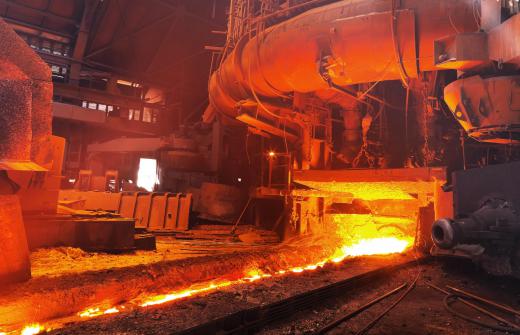Metal casting is a metalworking technique in which molten metal is poured into a mold and allowed to set before being removed to reveal a metal piece which can be finished with grinding, sanding, and polishing before being sold. This is one of the oldest metalworking techniques in the world, with evidence of cast metal pieces being found at archaeological sites all over the world, sometimes demonstrating a very high level of skill. This technique continues to be utilized today in a broad range of industries.
A wide variety of materials can be used to make molds for metal casting, depending on the metal being worked. The material needs to be strong and durable enough to withstand the hot metal, while being workable enough to be to be carved or worked into a mold. Wood, limestone, plaster of Paris, and ceramic have all been used for molds, and crude metal casting has been performed by pouring molten metal into forms made by hollowing out sand or clay. Re-usable molds for metal casting click together, holding the metal while it sets and then pulling apart.

Some molds are made by carving a form from wax, including a high level of detail so that the piece will be as finished as possible. The wax can be inserted into a wet ceramic or plaster of Paris block and then fired, leaving the shape of the mold behind while the wax flows out. This technique is known as “lost wax casting,” and it is simple enough to be taught in elementary school art classes.

To do metal casting, people usually need access to a foundry, a facility which has been specially outfitted for work with hot metals. Foundries include a very hot furnace or fireplace known as a forge which can be used to work metal directly for blacksmithing, or to melt metals for metal casting. Once metal is molten, it can also be alloyed with other metals to bring out desired properties, and then carefully poured into molds for casting.
Different metals require unique levels of skill to work with, as indicated by the terms “Bronze Age,” “Iron Age,” and so forth for different periods in human history. Some foundries are equipped to handle a range of metals, including metals which need a very high temperature for working, while others are more crude, and designed to be used with softer metals which are easier to work. Metal casting can also be accomplished with fine metals like silver and gold to make cast jewelry.
Ever since she began contributing to the site several years ago, Mary has embraced the exciting challenge of being a About Mechanics researcher and writer. Mary has a liberal arts degree from Goddard College and spends her free time reading, cooking, and exploring the great outdoors.

